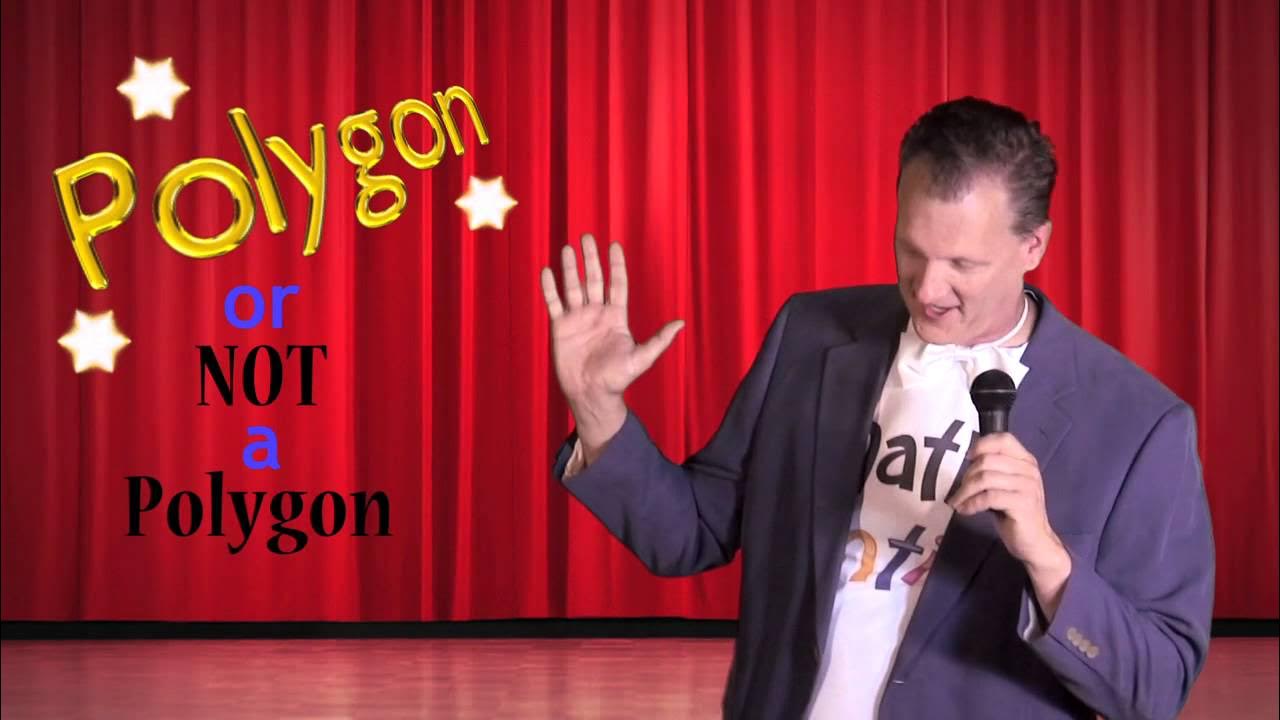Classify Polygons According to Number of Sides, Convex and Non-Convex | Grade 7 Mathematics | Q1 W1
Summary
TLDRIn this video, the presenter teaches viewers how to classify polygons based on their number of sides and whether they are convex or concave. Starting with basic shapes like triangles and pentagons, the video explains how to name polygons (e.g., heptagon for 7 sides) and count sides and angles. The presenter also highlights how to identify convex and concave polygons by drawing line segments between vertices. Throughout the video, real-life examples, such as pentagons, quadrilaterals, and decagons, are used to demonstrate these concepts, with clear instructions to help viewers understand the fundamentals of polygon classification.
Takeaways
- 😀 A polygon is a closed shape with connected sides. Its number of sides equals the number of angles.
- 😀 Triangles are 3-sided polygons and have 3 angles. They are common and easy to recognize.
- 😀 Heptagons are 7-sided polygons, named after the prefix 'hepta' for seven sides. They have 7 angles.
- 😀 Pentagons are 5-sided polygons, often drawn as a house shape, and have 5 angles.
- 😀 Nonagons are 9-sided polygons, named using the prefix 'nona' for nine sides. They have 9 angles.
- 😀 The number of angles in a polygon is always equal to the number of sides.
- 😀 When classifying polygons, counting the sides determines its name, like 'heptagon' for seven sides and 'pentagon' for five.
- 😀 To check if a shape is a polygon, ensure it is closed, with no open regions.
- 😀 Convex polygons have all line segments between two vertices inside the shape, while concave polygons have at least one line segment outside.
- 😀 For quadrilaterals, if a line connecting two vertices extends outside the shape, it is concave, like in some four-sided polygons.
- 😀 In general, polygons are named by counting the number of sides and using the appropriate prefix, like 'octagon' for 8 sides or 'decagon' for 10 sides.
Q & A
What is the main topic covered in the video?
-The video focuses on classifying polygons according to their number of sides and whether they are convex or concave.
How do we determine the name of a polygon?
-To determine the name of a polygon, count the number of sides it has. Use the prefix corresponding to the number of sides and add the suffix 'gon'. For example, a seven-sided polygon is called a heptagon.
How are angles related to the number of sides in a polygon?
-The number of angles in a polygon is equal to the number of sides it has. For example, a triangle has three sides and three angles.
What makes a polygon convex or concave?
-A polygon is convex if all line segments drawn between its vertices lie inside the shape. A polygon is concave if at least one line segment drawn between two vertices lies outside the shape.
How do we identify whether a shape is a polygon?
-A shape is a polygon if it is enclosed, with all its sides connected without any openings. If any side is not connected or if there is an open area, it is not a polygon.
What is the name of a polygon with six sides?
-A polygon with six sides is called a hexagon.
How can we tell if a polygon is convex from its vertices?
-To determine if a polygon is convex, connect any two vertices with a line segment. If the segment lies entirely inside the polygon, it is convex. If any segment lies outside the polygon, it is concave.
What is the name of a polygon with ten sides?
-A polygon with ten sides is called a decagon.
How can you recognize a concave polygon?
-A concave polygon is recognized when at least one line segment, drawn between two vertices, goes outside the polygon. If any segment lies outside the shape, it is concave.
What is the rule for naming polygons with more than four sides?
-Polygons are named based on the number of sides they have. For instance, a seven-sided polygon is a heptagon, an eight-sided polygon is an octagon, and so on, using specific prefixes like hepta, octa, etc., followed by the suffix 'gon'.
Outlines

This section is available to paid users only. Please upgrade to access this part.
Upgrade NowMindmap

This section is available to paid users only. Please upgrade to access this part.
Upgrade NowKeywords

This section is available to paid users only. Please upgrade to access this part.
Upgrade NowHighlights

This section is available to paid users only. Please upgrade to access this part.
Upgrade NowTranscripts

This section is available to paid users only. Please upgrade to access this part.
Upgrade NowBrowse More Related Video
5.0 / 5 (0 votes)





